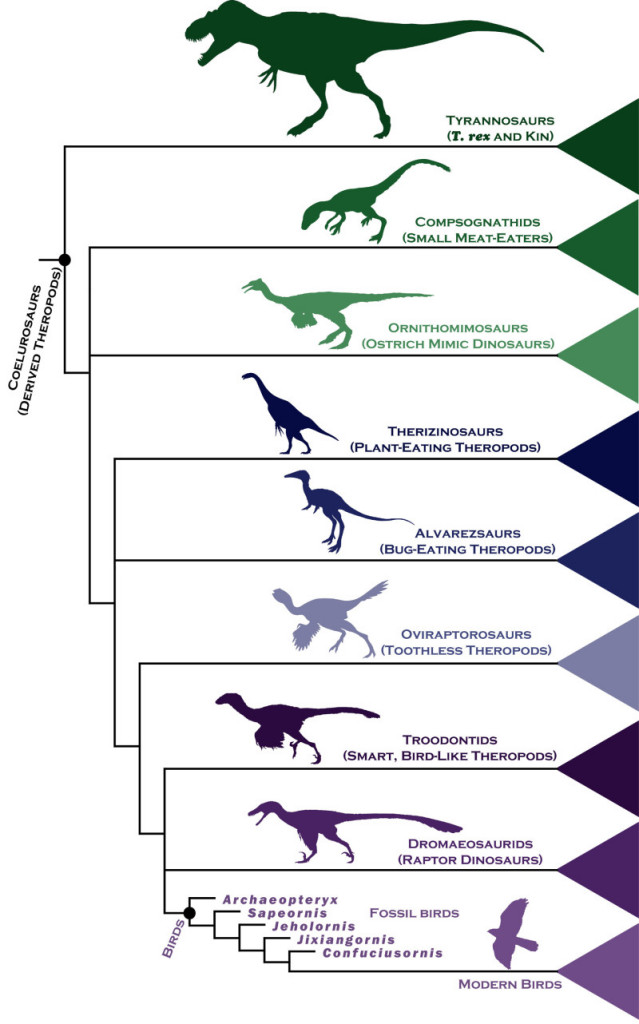The most comprehensive family tree of meat-eating dinosaurs ever created is enabling scientists to discover key details of how birds evolved from them.
The study, published in the journal Current Biology, shows that the familiar anatomical features of birds — such as feathers, wings and wishbones — all first evolved piecemeal in their dinosaur ancestors over tens of millions of years.

Researchers examined the evolutionary links between ancient birds and their closest dinosaur relatives, by analyzing the anatomical make-up of more than 850 body features in 150 extinct species, and used statistical techniques to analyze their findings and assemble a detailed family tree.
Credit: Steve Brusatte
However, once a fully functioning bird body shape was complete, an evolutionary explosion began, causing a rapid increase in the rate at which birds evolved. This led eventually to the thousands of avian species that we know today.
A team of researchers, led by the University of Edinburgh (UK) and including Swarthmore College Associate Professor of Statistics Steve C. Wang, examined the evolutionary links between ancient birds and their closest dinosaur relatives. They did this by analyzing the anatomical make-up of more than 850 body features in 150 extinct species and used statistical techniques to analyze their findings and assemble a detailed family tree.
Based on their findings from fossil records, researchers say the emergence of birds some 150 million years ago was a gradual process, as some dinosaurs became more bird-like over time. This makes it very difficult to draw a dividing line on the family tree between dinosaurs and birds.
Findings from the study support a controversial theory proposed in the 1940s that the emergence of new body shapes in groups of species could result in a surge in their evolution.
“The evolution of birds from their dinosaur ancestors was a landmark in the history of life,” says Wang. “This process was so gradual that if you traveled back in time to the Jurassic, you’d find that the earliest birds looked indistinguishable from many other dinosaurs.”
Wang invented a novel statistical method that was able to take advantage of new kinds of data from the fossil record, which reached the conclusion that early birds had a high rate of evolution. He adds that “birds as we know them evolved over millions of years, accumulating small shifts in shape and function of the skeleton. But once all these pieces were in place to form the archetypal bird skeleton, birds then evolved rapidly, eventually leading to the great diversity of species we know today.”
“There was no moment in time when a dinosaur became a bird, and there is no single missing link between them, ” says Steve Brusatte of the University of Edinburgh’s School of GeoSciences, who led the study. “What we think of as the classic bird skeleton was pieced together gradually over tens of millions of years. Once it came together fully, it unlocked great evolutionary potential that allowed birds to evolve at a super-charged rate.”
The work was supported by the European Commission, National Science Foundation, the University of Edinburgh, Swarthmore College’s Research Fund, Swarthmore College’s James Michener Faculty Fellowship, Columbia University, and the American Museum of Natural History.



 September 27th, 2014
September 27th, 2014  Riffin
Riffin  Posted in
Posted in  Tags:
Tags: 